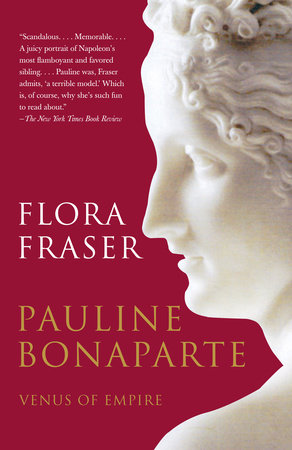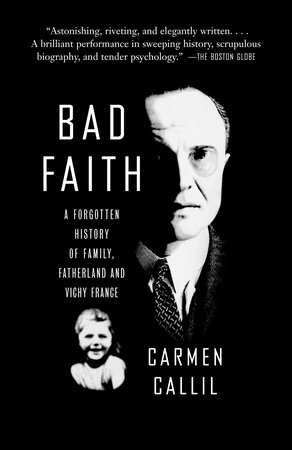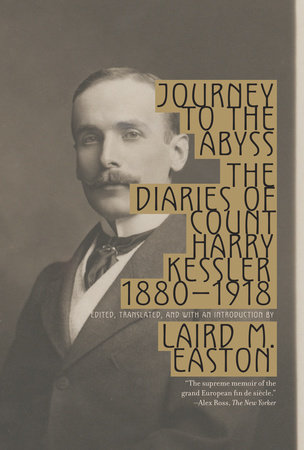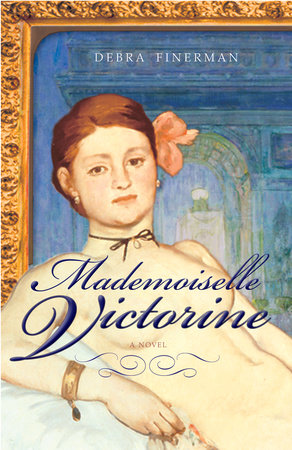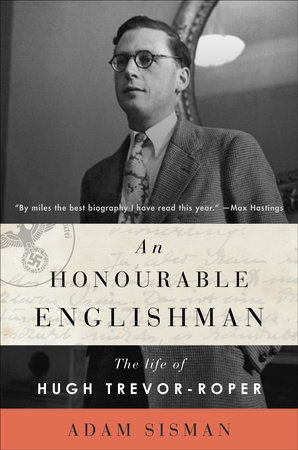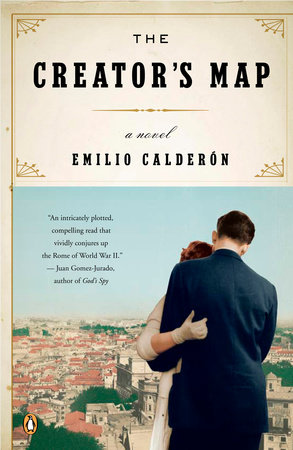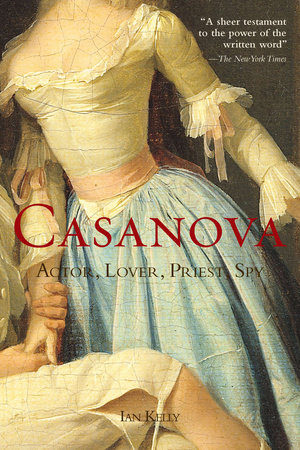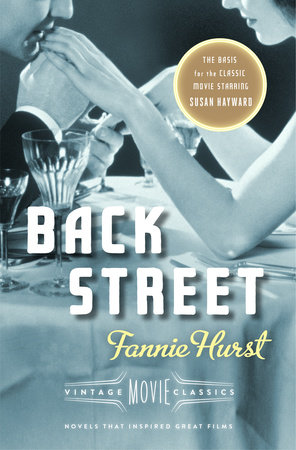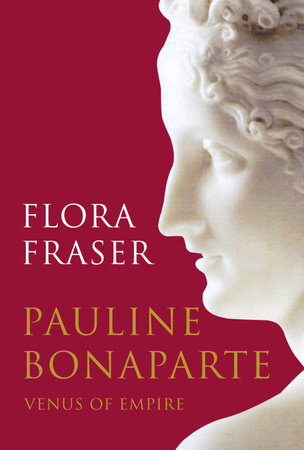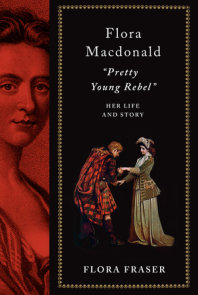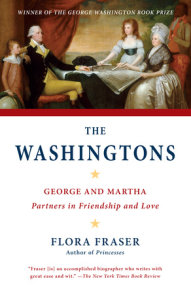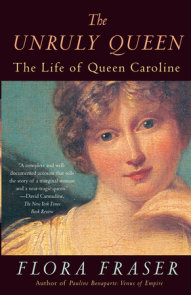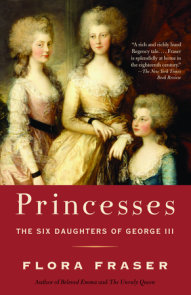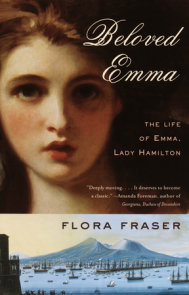Author Q&A
Q: Where did you first encounter Pauline Bonaparte, and what inspired you to write about her life?
A: Many years ago I was with an Italian friend and looking at a portrait of Pauline Bonaparte in the Duke of Wellington’s house in London. Pauline married Prince Borghese as her second husband, and my friend Sabina was a Borghese by birth. ‘You can read her letters’, Sabina offered, as I stared at Napoleon’s beautiful sister, there in the house of Wellington, who defeated the French Emperor at Waterloo. ‘They are all in the Vatican. But no one mentions her in my family, she is too scandalous.’ Pauline’s near-naked statue in the Villa Borghese, not to mention her many celebrated love affairs, plainly still had the power to shock! I was intrigued by the idea of reading Pauline’s letters amongst the correspondence of cardinals and princes of the Church, but I was busy writing about another scandalous woman, Emma, Lady Hamilton, Nelson’s mistress. We dropped the subject, and when, some years later, I visited the tenement house where Pauline grew up in Ajaccio on Corsica, I was meditating on a book about Napoleon, her brother, and not about her. (In the event I abandoned the idea and so one less book has been added to the vast library on the emperor!) Time passed. One evening I was walking to dinner in Rome, and the gates of a palazzo opened and out came a car. Briefly illuminated within I saw a double courtyard with statues surmounting the interior colonnade. Then the gates closed and we were again in darkness. But when I made out the name of the palazzo on my map, it was the Palazzo Borghese. Remembering the tenement house in Corsica, I thought what a journey Pauline had made—and I resolved to tell her story one day. But that day didn’t come till about four years ago when I was casting about for a new subject for a biography, and had incidentally decided to write about a man. I pursued various worthy candidates in the British Library for some weeks and then one evening on impulse rang my editor at Knopf, Bob Gottlieb. ‘It’s not a man, it’s Pauline Bonaparte’, I blurted out. Bob, understanding this announcement, as not everyone would have, said, ‘Done’ and the project was born.
Q: Napoleon’s name is universally known, yet most readers probably have not heard of his sister. Why, in your opinion, did such a fiery and iconic woman fade into obscurity?
A: Nowadays it seems almost inconceivable that the lives of bold and independent-minded women could be regarded as posing a threat to society. Nevertheless, in the years following her death in 1825 Pauline Bonaparte presented to moralists of the nineteenth century a terrible role model for women. She had generally got exactly what she wanted, and, besides taking lovers when she wanted and with impunity, had triumphed in a number of financial battles with her brother and with her husband, Prince Borghese. When Napoleon III, Pauline’s nephew, became emperor of the French after a rash of Bourbon kings restored after his uncle’s fall, not only were Napoleon I’s ashes brought to France from St. Helena, but many hagiographies of the first emperor appeared. His wife, Josephine, appeared in them as the beautiful, pliant muse of Malmaison, growing roses and flitting through the grounds in dresses of white muslin. But Napoleon’s sister Pauline, caustic, chic and contrary, as well as very much there at the time, was excluded from the story. And so, airbrushed out of the story, she began to fade into obscurity—except for that statue, the effigy of an overwhelmingly confident woman., in the Villa Borghese in Rome. Pauline’s statue, the Venus Victorious endlessly challenges the onlooker. It is, as someone more vulgar than I has observed, ‘sex on a stick’.
Q: You’ve written several biographies about royal or noble women—Emma, The Unruly Queen, Princesses—how did Pauline differ from your previous subjects? You’ve mentioned how much you enjoyed writing her story.
A: Well, Pauline is definitely the most outrageous character I have ever written about. She was so demanding and capricious, it was quite hard sometimes to keep a straight face when I was reading her letters in a rather forbidding library in Paris. She complained about everything. But she knew she could get away with anything with some people, because she was the emperor’s sister, and she rather despised those who gave in to her. With some people, however, notably her first husband and her brother Napoleon, she was a different person. She was fiercely loyal to General Leclerc, her first husband, and, when they were in Haiti and under attack from the native army, she refused to leave the island. His death caused her great grief but Pauline was a survivor and she rallied. Her greatest loyalty was reserved for her brother Napoleon, and, alone of his siblings, she followed him when he was exiled to Elba. She even wanted to go out to him on St.Helena, that rock in the Atlantic where he was marooned after Waterloo, but her petition to the English government coincided with news of Napoleon’s death. Pauline quarrelled with her brother and was prone to disobey him while he was in power. But, when his power was gone, she was his ‘comforting angel’. The twists and turns in Pauline’s story, the different aspects of her character that are revealed at different times, her sheer bloody-mindedness about getting her own way—there really aren’t many like her. I don’t suppose I’ll ever write about anyone so infinitely entertaining again—even if, sometimes, she’s appalling!
Q: In addition to being an acclaimed biographer in your own right, you’re also the daughter of the celebrated biographer Lady Antonia Fraser and have co-founded the Elizabeth Longford Prize for Historical Biography along with your husband. What is it about the genre of biography that you find so appealing?
A: I enjoy enormously coming at history through the lives of those who were a part of it. Perhaps, as a third-generation biographer, I am genetically programmed to think that way! I seem to remember dates and events of history better when they are experienced by individuals, rather than recounted as a narrative in their own right. But there’s another thing. The voices of historical characters. Whether it’s the American Revolution and David McCullough writing on John Adams, or Robert Caro’s multi-volume life of Lyndon B Johnson, I enjoy reading extensive quotes from the letters or writings of biographical subjects. Their voices are ultimately what a good biographer wants to resonate in the reader’s mind, and the good biographer is expert at framing those voices with a narrative which allows those voices to sing out. I suppose what I find so appealing about writing biography is that what I outline above seems with each book so difficult, and then by degrees you make out a way to do it. The rewards can be huge. After the initial tussle with Pauline Bonaparte, I spent a year writing it, and enjoyed every minute. It was like playing a difficult piano piece and getting all the expression right.
Q: In Pauline Bonaparte you cite many private letters and personal accounts and anecdotes about Pauline. Where did you discover these sources?
A: A dedicated nineteenth century historian called Frederic Masson collected all the letters of Napoleon’s family that he could. So Pauline’s correspondence, as far as it related to her life in Paris, when she occupied what is now the British Embassy, is with the other family papers in the Bibliotheque Thiers. This library is conveniently near the Gare du Nord, where the Eurostar train comes in from London. Unfortunately it’s only open from 12:00 pm – 6:00 pm, Thursdays and Fridays. Highly inconvenient for getting back to weekend life with my husband and children in London! The Vatican Secret Archive in Rome, on the other hand, which houses the Borghese papers, is open 8:30 am – 1:30 pm which was fine. Except about 11:00 am I always desperately crave coffee. And by the time you had left the archive and negotiated several courtyards and walls and gates to go out of the Vatican and get to a café, and then come all the way back again, negotiating Swiss Guards and others, well, that was a lot of time wasted. So I did without coffee but felt rather lassitudinous, during the latter half of the morning. Then one day I discovered a great secret worth its weight in gold—or caffeine, anyway. As usual about eleven, instead of going for coffee, I stepped moodily out of the archive reading room to get some air on an adjoining terrace dotted with orange trees. I had previously assumed the monks and priests filing up some steps to a structure looking like a chapel were en route to pray. But I suddenly had a divine inspiration and joined them. As I had surmised, the chapel had been turned into a café, there was a roaring trade being done in coffee, panini and even good red wine. To make matters even better, the prices appeared to be heavily subsidised! You will not be surprised to hear that I went back to work with fresh vigour.
Q: Perhaps the most well-known piece of Pauline Bonaparte’s history is the life-sized, near-nude marble statue of her that is currently on display in the Villa Borghese in Rome. Was posing in such an exposed state considered scandalous for the Emperor’s sister? And if so, did this bother Pauline (or Napoleon for that matter)?
A: Canova, who sculpted Pauline, had in fact sculpted Napoleon, in a colossal nude statue, as the god Mars. But the nudity that was considered heroic in a depiction of the emperor was definitely shocking, where his sister was concerned, and she was by marriage a Roman princess. Roman matrons were not supposed to behave like that, whatever they might get up to in Paris. When Pauline’s mother-in-law asked her if she did not fear to pose so lightly clad, the sitter’s reply was inimitable: ’There was a good fire in the room.’ Pauline revelled in the attention. But as she grew older, she turned against the statue, which her husband owned, and tried to prevent his showing it. Her brother’s enemies were not content, she said after Napoleon’s fall from power, to poison him on St. Helena; they came to see her in Rome and compare her, ravaged by time and anxiety, with her ever-youthful marble effigy.
Q: Two recurrent themes in the biography are Pauline’s continually fragile health (for which she travelled extensively and in the process inconvenienced most everyone around her), and her voracious sexual appetite. Were the two linked in any way?
A: It would seem likely that Pauline was affected by sacro-iliac pain following the birth of her son, Dermide Leclerc. She certainly ordered at different times over the years a belt to support her pelvis, and often refused ethereally to walk a single step—at the most awkward moments when traveling as well as when a lover was on hand to lift her. Pauline also, however, suffered from what was probably salpingitis, or infection and inflammation of the fallopian tubes. This she could have contracted either during childbirth or during sexual intercourse with someone infected with venereal disease. The doctors of the day diagnosed her ailment as ‘furor uterinus’, or nymphomania, and among other cures suggested applying leeches. Although countless men and women in this period before the advent of antibiotics suffered from every form of venereal disease, we cannot for sure link Pauline’s illness to her sexual activity. We can be more confident that no illness relating to her love affairs was mortal, as she died, aged only forty-five, from what was said to be a tumour on her stomach and was probably cancer.
Q: Pauline had countless lovers throughout her life—and her marriages—but it was also rumoured that she had intimate relations with her brother Napoleon. Is there any truth to this? How did their relationship change during Napoleon’s rise to power and fall from it? He certainly seemed to be the most important male figure in her life.
A: I believe that Napoleon and Pauline very likely did have intimate relations at a time when he was drawing away from his wife Josephine. She had reached an age where she was too old to bear him children and Napoleon desperately wanted an heir. Pauline certainly encouraged her brother to divorce Josephine, and there is a fascinating period in Paris when Josephine is the shunned—but not yet divorced—wife and Pauline the resplendent sister and confidante flaunting her power. Once Napoleon does divorce Josephine and remarries and fathers an heir, the intimacy with Pauline is over. When Napoleon is depressed and in exile on Elba, Pauline is the comforter, not the lover. It doesn’t seem to me likely that they had intimate relations then, although it has been widely alleged that they were lovers at that time. We cannot know for certain if Napoleon and Pauline were ever lovers. Most importantly, I don’t think, if they were, it changed anything dramatically in their relationship. To Pauline, Napoleon remained the head of the family, in a clannish, Corsican sense, to whom her loyalty, and that of the rest of her family, was owed. And as in many clans, there was a good deal of in-breeding accepted in the family. When Napoleon wanted their brother Louis to marry Josephine’s daughter, the match took place. When Napoleon thought of marrying one of his own nieces, it was regarded as a perfectly acceptable plan. In this context, if Napoleon and Pauline had intimate relations—and the rumours that they did at some point are strong—the act would not perhaps have seemed as unnatural as it does to us today.
Q: Even beyond her relationship with Napoleon, rumors continually swirled around Pauline. Did you notice a similarity to the tabloids and gossip we see surrounding celebrities today? And did you come across anything truly ridiculous?
A: When Pauline was in Haiti with her first husband, General Leclerc, the most amazing claims were made. They said she had threesomes with natives of the island, and lesbian affairs, and experimented to see whether the black Haitians made better lovers than her husband’s French fellow officers. There were other common reports—for instance, that Pauline was a ‘modern Messalina’, the Empress Messalina having had an ungovernable sexual appetite. There was one story which for some reason seems particularly ludicrous. Pauline was thought to have become colossally rich from looted property when she was in Haiti with her husband, Leclerc. Accordingly it was said , when she returned to France in mouirning and with her dead husband’s bier, that in Leclerc’s coffin, rather than his body, were piles of cash. Although Pauline, in appearance, was petite and utterly feminine with pale skin and womanly curves, the stories that accrued about her are all about her being outrageous. And so the press Pauline attracted to me recalls the kind of stories that feature male rock stars like Mick Jagger. But I don’t want to exclude Madonna. Pauline was definitely the Material Girl of her generation.
Q: Pauline didn’t get on with many of the women at court, and she showed an active dislike for the Empress Josephine. Was it just jealousy or something deeper?
A: When Pauline first came across Josephine, the latter was newly married to Napoleon, but was no novice bride. Josephine was a very sophisticated woman who had been married already—to an aristocrat who had been guillotined—and had two children. Josephine’s friends were the most fashionable women in Paris—and Pauline, I think, felt like a dowdy provincial beside her. Pauline soon learnt sophistication, and, without any education at all, became famous for the style of her dress, her jewels, and her homes. But Pauline was very competitive, and was prepared to fight hard and dirty to win the pre-eminent place, be it for beauty, wit or fashion. She was in this way, as many observed, wonderfully childish, and indeed some felt the Bonapartes in some respects had never really left the nursery!
Q: Fashion was very important to Pauline, and she was considered by many to be the most beautiful woman in Europe. Beyond her portraits, how did you discover the details of her extensive wardrobe and accessories?
A: In the Bibliotheque Thiers in Paris there is a fine collection of invoices from Pauline’s many dressmakers, and the jewellers that she patronized. Besides, she corresponded minutely with the Michelots, her steward and his wife whose taste she trusted, about her different households, and many of these letters still exist. (In addition to the house in the Faubourg St Honore that Napoleon bought for Pauline when she was a widow, he gave her the chateau of Neuilly outside Paris.) She was also always playing with her jewels, both those her husband Borghese gave her on their marriage, and those Napoleon gave her. When Prince Borghese attempted to recover the Borghese jewels from Pauline after Napoleon’s fall, she claimed they had been set and re-set so often she ahd no memory of which stones were those given to her by Napoleon and those belonging to the Borghese family.
Q: One of the most fascinating—and devastating—chapters of Pauline’s life was the time she and her first husband Leclerc spent in Saint Domingue. Was it typical for a woman of her stature to accompany her husband on such a hostile assignment?
A: Some have suggested that Napoleon made Pauline go with Leclerc—and even gave Leclerc this dangerous command—because he could not control Pauline, who flaunted her lovers when she was in Paris. But this command—its aim to restore the sugar income of Saint Domingue to France—was the most important mission for France at this time. Napoleon gave it to Leclerc because this officer had proved himself a brilliant soldier and an excellent administrator, and was above all others the most likely man to succeed. The plan was that Leclerc was to become governor and remain in Haiti at least a year or two, once he had subdued the natives, an occurrence that never in fact took place. (When Leclerc died, Napoleon said he had lost his right arm.) For a wife to follow her husband when he was appointed to the colonies was not unusual. What was unusual was for Pauline to accompany her husband when the island was still in enemy hands. As it transpired, she rose magnificently to the challenge, and scorned frightened women with the declaration, ‘Napoleon’s sister does not feel fear.’
Q: Is there anything about Pauline that you wish you could have found out, but weren’t able to learn from the sources that exist?
A: I would have liked to have found correspondence between Pauline and a lover, Jules de Canouville, who was the epitome of a dashing officer in the Napoleonic Wars and who fell at the Battle of Moscow. We know that Pauline was absolutely stricken when she had news of his death. I would like to have had more of a picture of what he was like, and why he made such an impression on her, when her heart remained fairly hardened towards so many of her lovers. He does look frightfully handsome, so perhaps that was enough.
Q: What’s next for you? Do you have your next subject in mind, and do you think you will write about a man like you had planned to do?
A: I have just embarked on a book which I am going to enjoy writing, but there is a great deal of reading and thinking to do first. It is called Portrait of a Marriage: The Washingtons, and with it I move into American territory. Well, my husband is American, and our two sons have dual nationality, so perhaps I shouldn’t be so timorous. But I am aware that George and Martha Washington are not exactly English subjects. In fact, very decidedly not! Still, Bob Gottlieb, who has supported and encouraged me my whole writing life, is once more supportive. So rather tentatively and with a good deal of help to come, I hope, from the ladies of Mount Vernon, as well as from the wonderfully digitized papers of George Washington—three cheers for the University of Virginia—I cast off into these new transatlantic waters.
